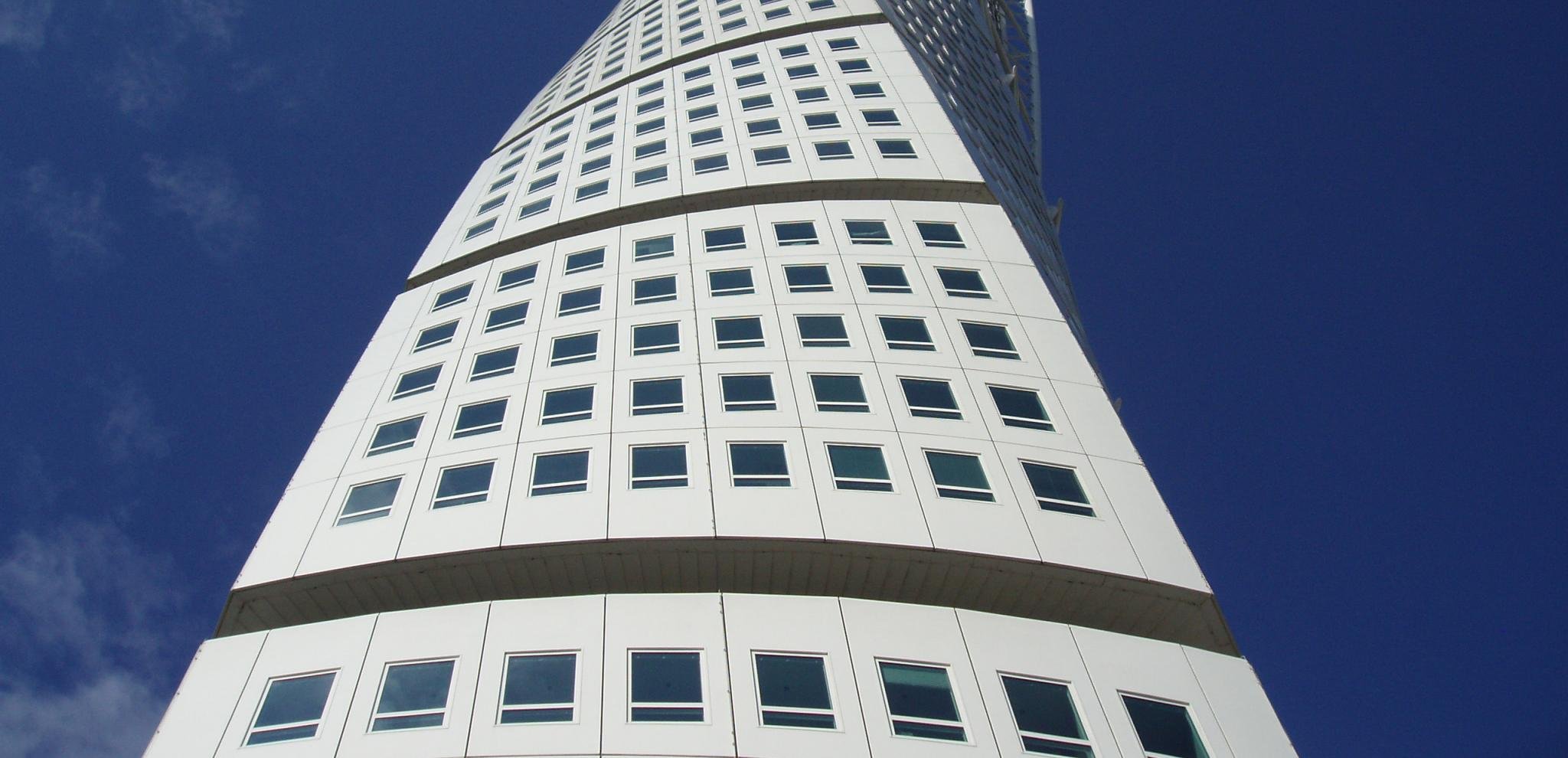The 2000s, also known as the new millennium, was a time of great change and progress in many aspects of life. The architecture and interior design of this era were no exception, and the neo-modernism style emerged as a popular trend.
One notable feature of neo-modernism is its exterior design. The facade typically consists of flat, thin plaster painted with silicone masonry paint, and features horizontal tongue-and-groove and oiled hardwood. The roof slopes away from the entrance side of the house, with untreated zinc sheets. Windows are factory-coated aluminum frames, with no surrounds and in the same plane as the facade. Outside doors are grooved hardwood with a round or oblong window. Large wooden decks are also a common feature.
Turning Torso in Malmo, Sweden. Image from Visitskane.se
Inside, neo-modernism is characterized by an open floor plan, simple lines, large panorama windows, and a roof with a shallow slope. Wooden and parquet floors are common, and glazed doors with birch or varnished finishes are used for interior doors. Door handles are typically brushed steel with separate key plates. Brick-built fireplaces and stove units with single-pane glass fronts are popular, and wallpapered feature walls in colors like latte, beige, and light brown are common. Spotlights are often inset in the ceiling for lighting.
Furniture in the neo-modernism style is light and fresh, with a focus on the New Nordic design movement. Many new start-ups, such as Tradition, Muuto, HAY, Normann Copenhagen, and Ferm Living, emerged during this era, bringing a new era for Danish design in the mid-price range. Light-color woods, furniture with powder-coated detail, matte surfaces, and furniture with hourglass shapes are common. Living room furniture and divan sofas with firm backs and plump arms, as well as playful shapes, are also popular. Woven plastic mats, forerunners of Pappelina rugs, are often used.
In the bathroom, mosaic pillars in the shower, wall-mounted toilets, rainfall showerheads, floor heating, and heated towel rails are common features. High-gloss cupboard doors, work surfaces in durable composites, stainless-steel appliances, and glass and wallpaper behind glass are typical in the kitchen.
Overall, the neo-modernism style of the 2000s is characterized by its sleek and minimalist design, with a focus on natural materials and simplicity. While it may not be as ornate as some other styles, its clean lines and open spaces create a welcoming and inviting atmosphere in any home.


